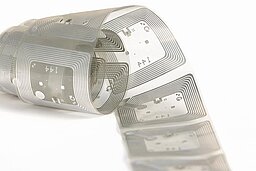Plasma Technology for Manufacturing Flexible Electronic Components
Plasma technology plays a crucial and versatile role in the development and manufacturing of flexible electronics, thanks to its ability to modify, deposit, and pattern materials at low temperatures and with high precision.
Surface Modification

Flexible substrates — typically polymers such as PET, PEN, PI, or PDMS — often have low surface energy, making it difficult for thin films or inks to adhere. Plasma treatment effectively modifies surface properties without damaging the bulk.
Applications:
- Surface activation: Oxygen or air plasma introduces polar functional groups (–OH, –COOH) that improve wettability and adhesion.
- Surface cleaning: Removes organic contaminants and residual monomers from polymer surfaces.
- Etching / micro-texturing: Plasma etching (e.g., O₂, Ar, CF₄) creates nanoscale roughness for better mechanical interlocking of coatings.
Typical results:
- Improved adhesion of metals, oxides, or conductive inks.
- Enhanced printing quality in inkjet or screen-printed electronics.
Thin Film Deposition
Plasma-assisted deposition enables the fabrication of functional thin films at low substrate temperatures — crucial for heat-sensitive flexible materials.
- Creates ultra-thin polymer coatings with tailored chemistry.
- Useful for hydrophobic coatings or protective layers.
Encapsulation and Barrier Layers
Flexible devices (like OLEDs, OPVs, or sensors) are extremely sensitive to moisture and oxygen.

